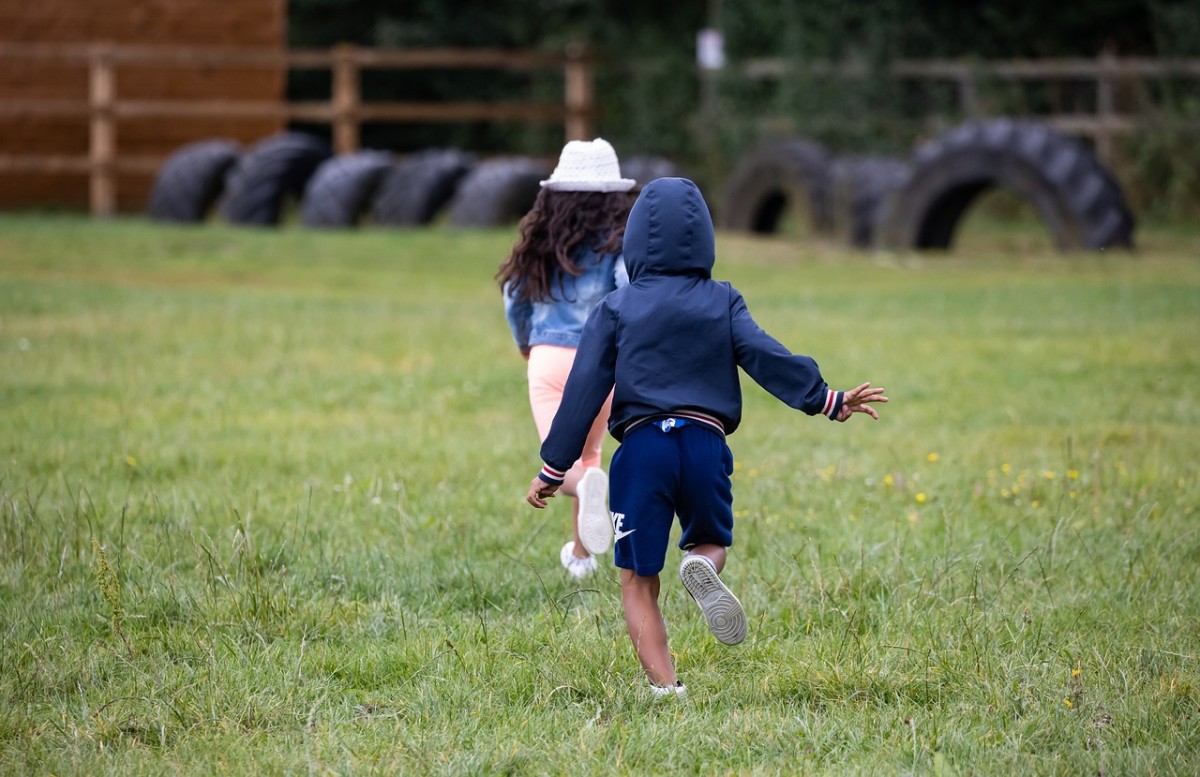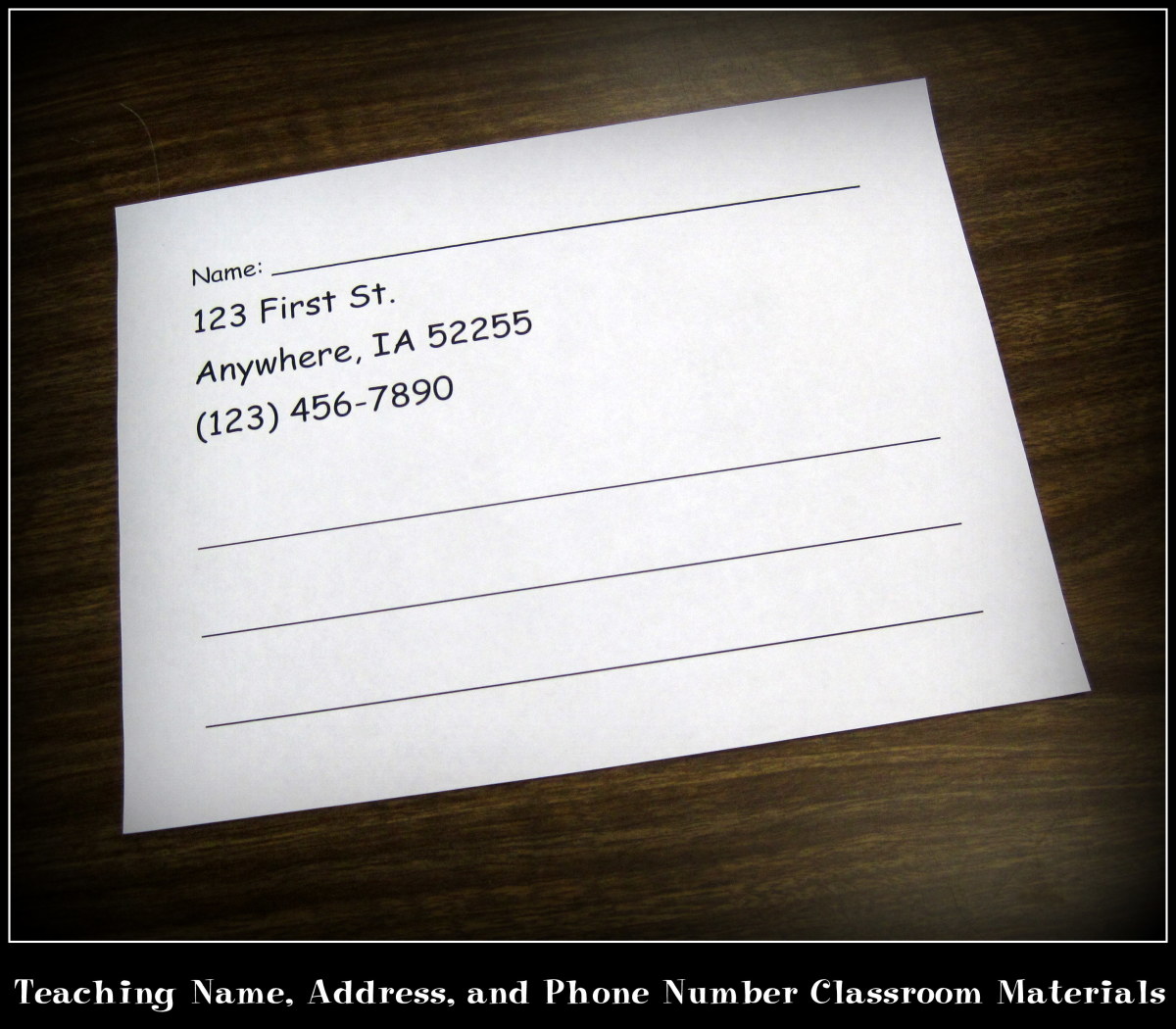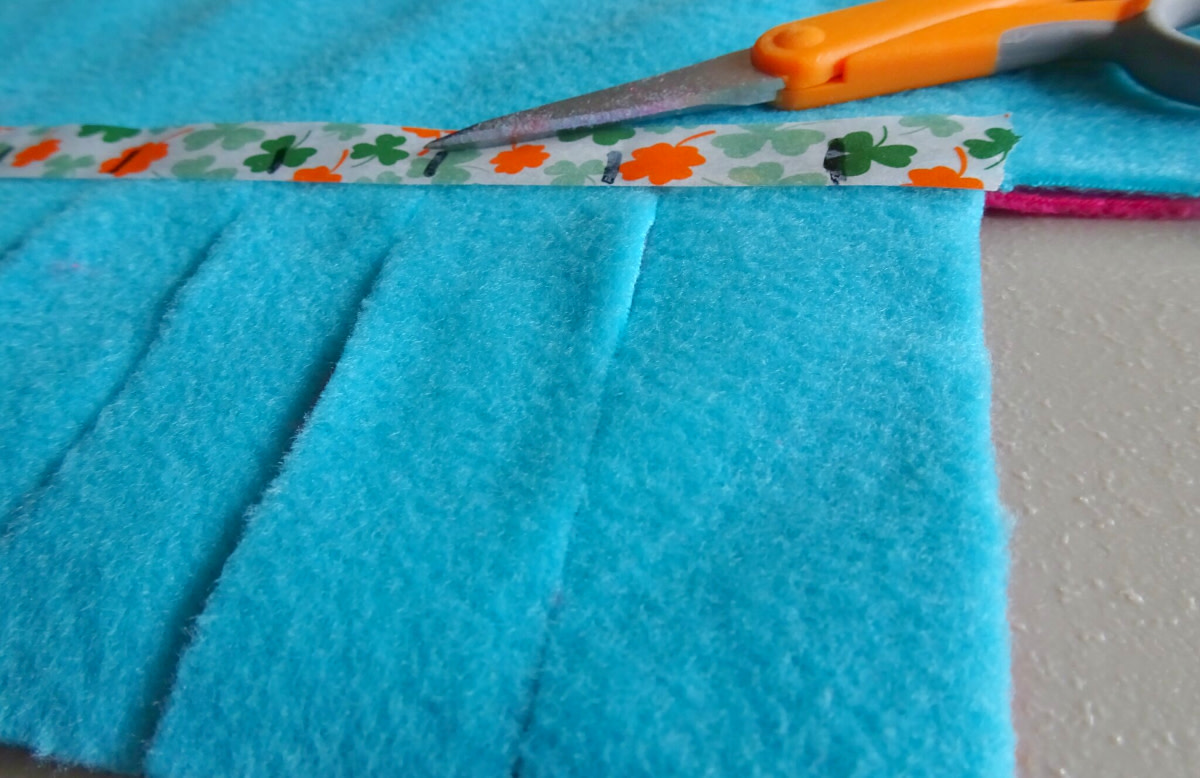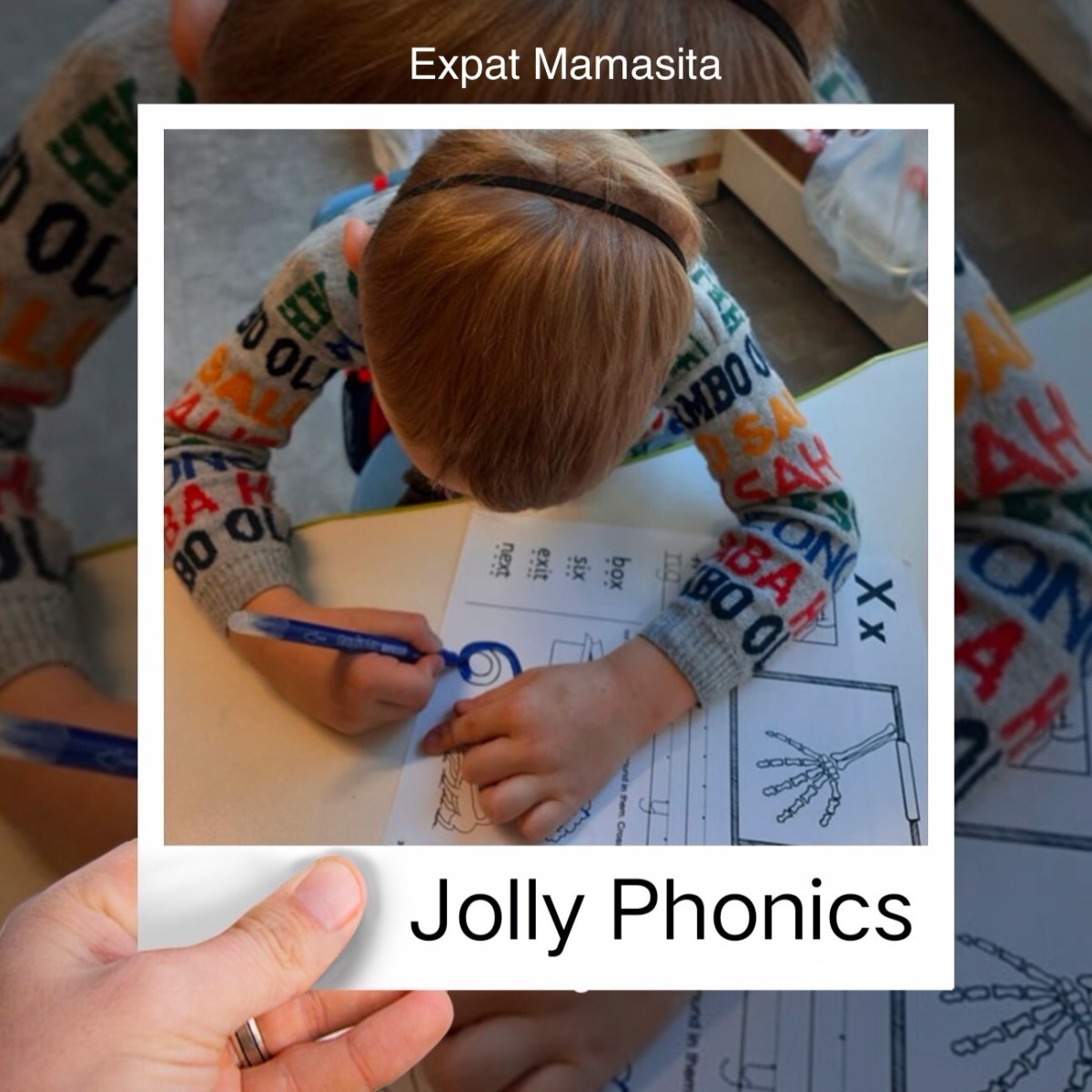Fine Motor Skill Toy: How to Make Fleece Shapes with Button and Snap Closures
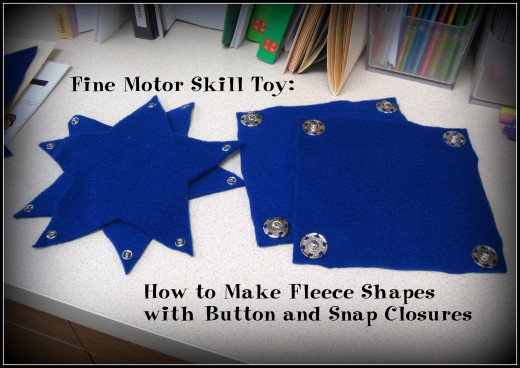
Skill Sets
In addition to fine motor skills, these toys also help students work on matching and shape names. I chose to make all of the shapes the same color, but you can make different colored shapes so that students can also work on their color skills.
Fine Motor Skills - Playdough Chain
Fine motor skill development is an integral part of development for all children. It is important that they have exposure to activities that develop these skills on a regular basis in order to make the progress that they need. Providing a variety of materials makes these experiences more engaging. When I taught special education, I developed these fleece shapes with buttons and snaps. This article includes all of the information that you need to make them for your classroom or home.
I designed these shapes for preschool through 2nd grade special education students, but they are appropriate for general education preschool and kindergarten aged students as well. I have used them with 3rd and 4th grade special education students who need fine motor work, too.
Once students understand how to fasten buttons and snaps, this is a great independent activity. You can use it as a choice during a center or as part of an independent work system.

Where can you purchase your sewing materials?
You should be able to purchase all of the sewing supplies at Wal-Mart except for the fleece (currently most Wal-Marts have a very limited fabric selection), which you can purchase at Joann Fabrics. If you can't find anything at Wal-Mart, you should be able to find it at Jo-Ann as well.
Where you can find shape patterns?
- Geometry Shapebooks - Cubes, Squares, Triangles, Pyramids, Circles | abcteach
I got my shape patterns from this free web site. I only made the five shapes that I show in this article, but there are other shapes to choose from if you get ambitious.
Materials
- 1/2 yard (0.5 m) of fleece (one color) (I bought 1/2 yard at the time which was more than I needed, it's probably closer to 1/4 yard for this project but it doesn't hurt to have extra)
- Sharp fabric scissors
- About 40 pins
- 12 buttons, all 1/2" (1.3 cm) in diameter or larger (any colors are fine)
- 10 snaps, various sizes (I used small ones for the star and large ones for the square, you can do this differently if you'd like)
- Black Sharpie or other black marker, felt tip, or roller ball pen that will show up on fleece
- Ruler
- 1 spool sewing thread (color that will coordinate with your fleece)
- 1 sewing needle (for this project, I used one that came with a basic sewing repair kit)
- Shape patterns for at least five basic shapes (see note below)

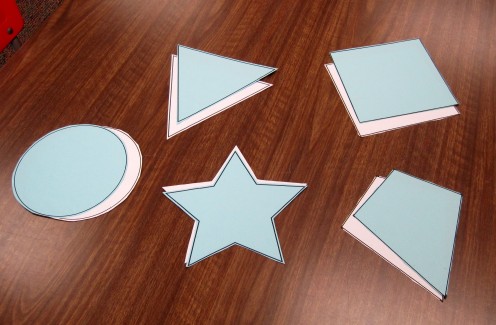
Directions
- Print 2 copies of all of the shape patterns that you would like to use. Cut them out right on or very close to the black lines.
- Pin the patterns to the fleece.
- Cut out all of the shapes.
- Take the pins out. Put the shape patterns aside.
- Decide which shapes will have buttons and which shapes will have snaps. Use your ruler and Sharpie to mark where you will sew the buttons and snaps and where you will cut the button holes. I centered most of mine 1/2-1" (1.3 to 2.4 cm) from the corners. You can adjust this accordingly for the size of your buttons and shapes.
- Cut a 5' (1.5 m) piece of thread. Thread your needle.
- For each button or snap, tie several knots at the end of your thread before starting. Sew the button or snap onto the fleece, working the thread through the holes at least 2-3 times to give it extra security. Tie the thread off with several knots before cutting it. A 5' piece of thread was enough for me to sew on all of the snaps and buttons on the 5 shapes here. If you need to, you can cut more thread.
- Cut the holes for the buttons.
- You will now be able to fasten the buttons and snaps.
Finished Fleece Shapes
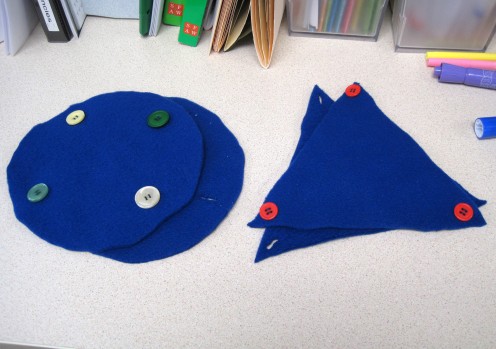
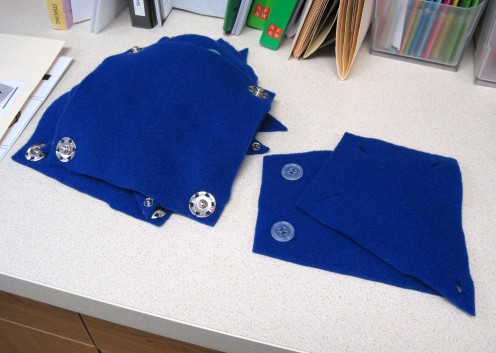
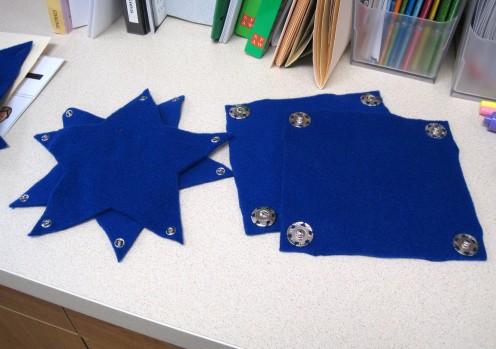

Fine Motor and Upper Extremity Activity - Hidden Cups
Fine Motor Skills Toys
Fine Motor Skill Activity: New Uses for Silly Bandz
Are you looking for more fine motor skills resources? Check this out!
- Occupational Therapy: Handwriting Fine Motor Skill Work (K-1)
This article includes a number of suggestions for supplemental occupational therapy handwriting fine motor skill work. These activities are geared for kindergarten and first grade students. - Fine Motor, Visuospatial, and Matching Activities for Children with Special Needs
Learn about the importance of helping children with special needs develop certain skills.



